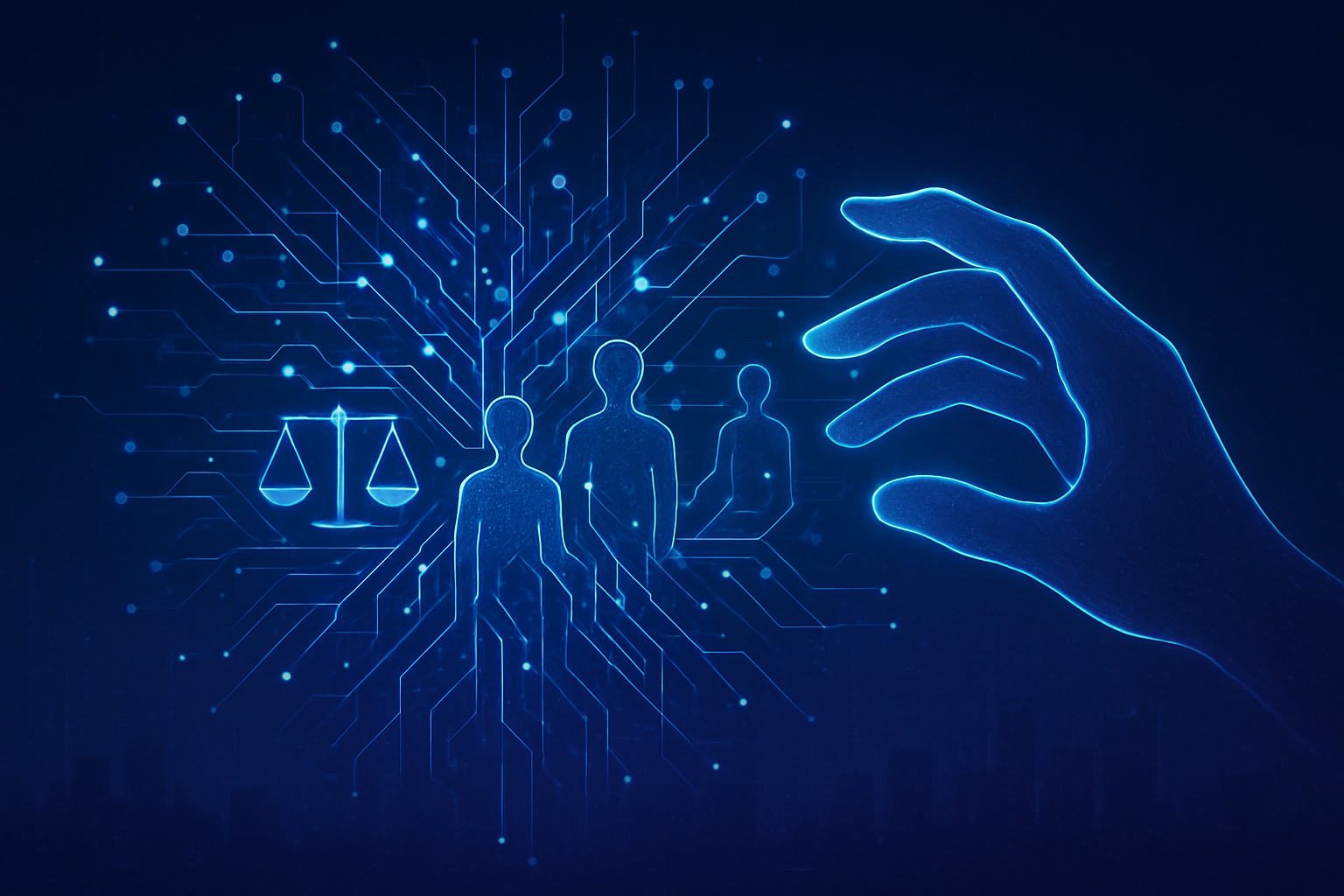As artificial intelligence rapidly permeates every facet of modern existence, its transformative power extends far beyond mere technological advancement, compelling humanity to confront profound ethical, philosophical, and societal dilemmas. The integration of AI into daily life sparks critical questions about its impact on fundamental human values, cultural identity, and the very structures that underpin our societies. This burgeoning field of inquiry demands a rigorous examination of how AI aligns with, or indeed challenges, the essence of what it means to be human.
At the heart of this discourse lies a critical analysis, particularly articulated in works like "Artificial Intelligence and the Mission of the Church. An analytical contribution," which underscores the imperative to safeguard human dignity, justice, and the sanctity of labor in an increasingly automated world. Drawing historical parallels to the Industrial Revolution, this perspective highlights a long-standing vigilance in defending human aspects against new technological challenges. The core concern is not merely about job displacement, but about the potential erosion of the "human voice" in communication and the risk of reducing profound human experiences to mere data points.
The Soul in the Machine: Dissecting AI's Philosophical Quandaries
The ethical and philosophical debate surrounding AI delves deep into its intrinsic capabilities and limitations, particularly when viewed through a humanitarian or even spiritual lens. A central argument posits that while AI can process information and perform complex computations with unparalleled efficiency, it fundamentally lacks the capacity for genuine love, empathy, or bearing witness to truth. These profound human attributes, it is argued, are rooted in divine presence and are primarily discovered and nurtured through authentic human relationships, not through artificial intelligence. The very mission of conveying deeply human messages, such as those found in religious or philosophical texts, risks being diminished if reduced to a process of merely "feeding information" to machines, bypassing the true meaning and relational depth inherent in such communication.
However, this perspective does not negate the instrumental value of technology. The "Artificial Intelligence and the Mission of the Church" contribution acknowledges the utility of digital tools for outreach and connection, citing examples like Carlo Acutis, who leveraged digital means for evangelization. This nuanced view suggests that technology, including AI, can serve as a powerful facilitator for human connection and the dissemination of knowledge, provided it remains a tool in service of humanity, rather than an end in itself that diminishes authentic human interaction. The challenge lies in ensuring that AI enhances, rather than detracts from, the richness of human experience and the pursuit of truth.
Beyond these spiritual and philosophical considerations, the broader societal discourse on AI's impact on human values encompasses several critical areas. AI can influence human autonomy, offering choices but also risking the diminution of human judgment through over-reliance. Ethical concerns are prominent regarding fairness and bias, as AI algorithms, trained on historical data, can inadvertently perpetuate and amplify existing societal inequalities, impacting critical areas like employment, justice, and access to resources. Furthermore, the extensive data collection capabilities of AI raise significant privacy and surveillance concerns, potentially infringing on civil liberties and fostering a society of constant monitoring. There are also growing fears of dehumanization, where sophisticated AI might replace genuine human-to-human interactions, leading to emotional detachment, a decline in empathy, and a redefinition of what society values in human skills, potentially shifting emphasis towards creativity and critical thinking over rote tasks.
The Ethical Imperative: Reshaping AI Corporate Strategy and Innovation
The profound ethical considerations surrounding artificial intelligence are rapidly transforming the strategic landscape for AI companies, established tech giants, and nascent startups alike. Insights, particularly those derived from a humanitarian and spiritual perspective like "Artificial Intelligence and the Mission of the Church," which champions human dignity, societal well-being, and the centrality of human decision-making, are increasingly shaping how these entities develop products, frame their public image, and navigate the competitive market. The call for AI to serve the common good, avoid dehumanization, and operate as a tool guided by moral principles is resonating deeply within the broader AI ethics discourse.
Consequently, ethical considerations are no longer relegated to the periphery but are being integrated into the core corporate strategies of leading organizations. Companies are actively developing and adopting comprehensive AI ethics and governance frameworks to ensure principles of transparency, fairness, accountability, and safety are embedded from conception to deployment. This involves establishing clear ethical guidelines that align with organizational values, conducting thorough risk assessments, building robust governance structures, and educating development teams. For instance, tech behemoths like Alphabet (NASDAQ: GOOGL) (NASDAQ: GOOG) and Microsoft (NASDAQ: MSFT) have publicly articulated their own AI principles, committing to responsible development and deployment grounded in human rights and societal well-being. Prioritizing ethical AI is evolving beyond mere compliance; it is becoming a crucial competitive differentiator, allowing companies to cultivate trust with consumers, mitigate potential risks, and foster genuinely responsible innovation.
The impact of these ethical tenets is particularly pronounced in product development. Concerns about bias and fairness are paramount, demanding that AI systems do not perpetuate or amplify societal biases present in training data, which could lead to discriminatory outcomes in critical areas such as hiring, credit assessment, or healthcare. Product development teams are now tasked with rigorous auditing of AI models for bias, utilizing diverse datasets, and applying fairness metrics. Furthermore, the imperative for transparency and explainability is driving the development of "explainable AI" (XAI) models, ensuring that AI decisions are understandable and auditable, thereby maintaining human dignity and trust. Privacy and security, fundamental to respecting individual autonomy, necessitate adherence to privacy-by-design principles and compliance with stringent regulations like GDPR. Crucially, the emphasis on human oversight and control, particularly in high-risk applications, ensures that AI remains a tool to augment human capabilities and judgment, rather than replacing essential human decision-making. Companies that fail to adequately address these ethical challenges risk significant consumer backlash, regulatory scrutiny, and damage to their brand reputation. High-profile incidents of AI failures, such as algorithmic bias or privacy breaches, underscore the limits of self-regulation and highlight the urgent need for clearer accountability structures within the industry.
A Double-Edged Sword: AI's Broad Societal and Cultural Resonance
The ethical dilemmas surrounding AI extend far beyond corporate boardrooms and research labs, embedding themselves deeply within the fabric of society and culture. AI's rapid advancement necessitates a critical examination of its wider significance, positioning it within the broader landscape of technological trends and historical shifts. This field of AI ethics, encompassing moral principles and practical guidelines, aims to ensure AI's responsible, transparent, and fair deployment, striving for "ethical AI by design" through public engagement and international cooperation.
AI's influence on human autonomy is a central ethical concern. While AI can undoubtedly enhance human potential by facilitating goal achievement and empowering individuals, it also carries the inherent risk of undermining self-determination. This can manifest through subtle algorithmic manipulation that nudges users toward predetermined outcomes, the creation of opaque systems that obscure decision-making processes, and fostering an over-reliance on AI recommendations. Such dependence can diminish critical thinking, intuitive analysis, and an individual's sense of personal control, potentially compromising mental well-being. The challenge lies in crafting AI systems that genuinely support and respect human agency, rather than contributing to an alienated populace lacking a sense of command over their own lives.
The impact on social cohesion is equally profound. AI possesses a dual capacity: it can either bridge divides, facilitate communication, and create more inclusive digital spaces, thereby strengthening social bonds, or, without proper oversight, it can reproduce and amplify existing societal biases. This can lead to the isolation of individuals within "cultural bubbles," reinforcing existing prejudices rather than exposing them to diverse perspectives. AI's effect on social capital—the networks of relationships that enable society to function—is significant; if AI consistently promotes conflict or displaces human roles in community services, it risks degrading this essential "social glue." Furthermore, the cultural identity of societies is being reshaped as AI alters how content is accessed, created, and transmitted, influencing language, shared knowledge, and the continuity of traditions. While AI tools can aid in cultural preservation by digitizing artifacts and languages, they also introduce risks of homogenization, where biased training data may perpetuate stereotypes or favor dominant narratives, potentially marginalizing certain cultural expressions and eroding the diverse tapestry of human cultures.
Despite these significant concerns, AI holds immense potential for positive societal transformation. It can revolutionize healthcare through improved diagnostic accuracy and personalized treatment plans, enhance education with tailored learning experiences, optimize public services, and contribute significantly to climate action by monitoring environmental data and optimizing energy consumption. AI's ability to process vast amounts of data efficiently provides data-driven insights that can improve decision-making, reduce human error, and uncover solutions to long-standing societal issues, fostering more resilient and equitable communities. However, the path to realizing these benefits is fraught with challenges. The "algorithmic divide," analogous to the earlier "digital divide" from ICT revolutions, threatens to entrench social inequalities, particularly among marginalized groups and in developing nations, separating those with access to AI's opportunities from those without. Algorithmic bias in governance remains a critical concern, where AI systems, trained on historical or unrepresentative data, can perpetuate and amplify existing prejudices in areas like hiring, lending, law enforcement, and public healthcare, leading to systematically unfair or discriminatory outcomes.
These challenges to democratic institutions are also stark. AI can reshape how citizens access information, communicate with officials, and organize politically. The automation of misinformation, facilitated by AI, raises concerns about its rapid spread and potential to influence public opinion, eroding societal trust in media and democratic processes. While past technological milestones, such as the printing press or the Industrial Revolution, also brought profound societal shifts and ethical questions, the scale, complexity, and potential for autonomous decision-making in AI introduce novel challenges. The ethical dilemmas of AI are not merely extensions of past issues; they demand new frameworks and proactive engagement to ensure that this transformative technology serves humanity's best interests and upholds the foundational values of a just and equitable society.
Charting the Uncharted: Future Horizons in AI Ethics and Societal Adaptation
The trajectory of AI ethics and its integration into the global societal fabric promises a dynamic interplay of rapid technological innovation, evolving regulatory landscapes, and profound shifts in human experience. In the near term, the focus is squarely on operationalizing ethical AI and catching up with regulatory frameworks, while the long-term vision anticipates adaptive governance systems and a redefinition of human purpose in an increasingly AI-assisted world.
In the coming one to five years, a significant acceleration in the regulatory landscape is anticipated. The European Union's AI Act is poised to become a global benchmark, influencing policy development worldwide and fostering a more structured, albeit initially fragmented, regulatory climate. This push will demand enhanced transparency, fairness, accountability, and demonstrable safety from AI systems across all sectors. A critical near-term development is the rising focus on "agentic AI"—systems capable of autonomous planning and execution—which will necessitate novel governance approaches to address accountability, safety, and potential loss of human control. Companies are also moving beyond abstract ethical statements to embed responsible AI principles directly into their business strategies, recognizing ethical governance as a standard practice involving dedicated people and processes. The emergence of certification and voluntary standards, such as ISO/IEC 42001, will become essential for navigating compliance, with procurement teams increasingly demanding them from AI vendors. Furthermore, the environmental impact of AI, particularly its high energy consumption, is becoming a core governance concern, prompting calls for energy-efficient designs and transparent carbon reporting.
Looking further ahead, beyond five years, the long-term evolution of AI ethics will grapple with even more sophisticated AI systems and the need for pervasive, adaptive frameworks. This includes fostering international collaboration to develop globally harmonized approaches to AI ethics. By 2030, experts predict the widespread adoption of autonomous governance systems capable of detecting and correcting ethical issues in real-time. The market for AI governance is expected to consolidate and standardize, leading to the emergence of "truly intelligent governance systems" by 2033. As AI systems become deeply integrated, they will inevitably influence collective values and priorities, prompting societies to redefine human purpose and the role of work, shifting focus to pursuits AI cannot replace, such as creativity, caregiving, and social connection.
Societies face significant challenges in adapting to the rapid pace of AI development. The speed of AI's evolution can outpace society's ability to implement solutions, potentially leading to irreversible damage if risks go unchecked. There is a tangible risk of "value erosion" and losing societal control to AI decision-makers as systems become more autonomous. The education system will need to evolve, prioritizing skills AI cannot easily replicate, such as critical thinking, creativity, and emotional intelligence, alongside digital literacy, to prepare individuals for future workforces and mitigate job displacement. Building trust and resilience in the face of these changes is crucial, promoting open development of AI systems to stimulate innovation, distribute decision-making power, and facilitate external scrutiny.
Despite these challenges, promising applications and use cases are emerging to address ethical concerns. These include sophisticated bias detection and mitigation tools, explainable AI (XAI) systems that provide transparent decision-making processes, and comprehensive AI governance and Responsible AI platforms designed to align AI technologies with moral principles throughout their lifecycle. AI is also being harnessed for social good and sustainability, optimizing logistics, detecting fraud, and contributing to a more circular economy. However, persistent challenges remain, including the continuous struggle against algorithmic bias, the "black box problem" of opaque AI models, establishing clear accountability for AI-driven decisions, safeguarding privacy from pervasive surveillance risks, and mitigating job displacement and economic inequality. The complex moral dilemmas AI systems face, particularly in making value-laden decisions, and the need for global consensus on ethical principles, underscore the vast work ahead.
Experts offer a cautiously optimistic, yet concerned, outlook. They anticipate that legislation will eventually catch up, with the EU AI Act serving as a critical test case. Many believe that direct technical problems like bias and opacity will largely be solved through engineering efforts in the long term, but the broader social and human consequences will require an "all-hands-on-deck effort" involving collaborative efforts from leaders, parents, and legislators. The shift to operational governance, where responsible AI principles are embedded into core business strategies, is predicted. While some experts are excited about AI's potential, a significant portion remains concerned that ethical design will continue to be an afterthought, leading to increased inequality, compromised democratic systems, and potential harms to human rights and connections. The future demands sustained interdisciplinary collaboration, ongoing public discourse, and agile governance mechanisms to ensure AI develops responsibly, aligns with human values, and ultimately benefits all of humanity.
The Moral Imperative: A Call for Conscientious AI Stewardship
The discourse surrounding Artificial Intelligence's ethical and societal implications has reached a critical juncture, moving from abstract philosophical musings to urgent, practical considerations. As illuminated by analyses like "Artificial Intelligence and the Mission of the Church. An analytical contribution," the core takeaway is an unwavering commitment to safeguarding human dignity, fostering authentic connection, and ensuring AI serves as a tool that augments, rather than diminishes, the human experience. The Church's perspective stresses that AI, by its very nature, cannot replicate love, bear witness to truth, or provide spiritual discernment; these remain uniquely human, rooted in encounter and relationships. This moral compass is vital in navigating the broader ethical challenges of bias, transparency, accountability, privacy, job displacement, misinformation, and the profound questions surrounding autonomous decision-making.
This current era marks a watershed moment in AI history. Unlike earlier periods of AI research focused on intelligence and consciousness, or the more recent emphasis on data and algorithms, today's discussions demand human-centric principles, risk-based regulation, and an "ethics by design" approach embedded throughout the AI development lifecycle. This signifies a collective realization that AI's immense power necessitates not just technical prowess but profound ethical stewardship, drawing parallels to historical precedents like the Nuremberg Code in its emphasis on minimizing harm and ensuring informed consent in the development and testing of powerful systems.
The long-term societal implications are profound, reaching into the very fabric of human existence. AI is poised to reshape our understanding of collective well-being, influencing our shared values and priorities for generations. Decisions made now regarding transparency, accountability, and fairness will set precedents that could solidify societal norms for decades. Ethically guided AI development holds the potential to augment human capabilities, foster creativity, and address global challenges like climate change and disease. However, without careful deliberation, AI could also isolate individuals, manipulate desires, and amplify existing societal inequities. Ensuring that AI enhances human connection and well-being rather than diminishing it will be a central long-term challenge, likely necessitating widespread adoption of autonomous governance systems and the emergence of global AI governance standards.
In the coming weeks and months, several critical developments bear close watching. The rise of "agentic AI"—systems capable of autonomous planning and execution—will necessitate new governance models to address accountability and safety. We will see the continued institutionalization of ethical AI practices within organizations, moving beyond abstract statements to practical implementation, including enhanced auditing, monitoring, and explainability (XAI) tools. The push for certification and voluntary standards, such as ISO/IEC 42001, will intensify, becoming essential for compliance and procurement. Legal precedents related to intellectual property, data privacy, and liability for AI-generated content will continue to evolve, alongside the development of new privacy frameworks and potential global AI arms control agreements. Finally, ethical discussions surrounding generative AI, particularly concerning deepfakes, misinformation, and copyright, will remain a central focus, pushing for more robust solutions and international harmonization efforts. The coming period will be pivotal in establishing the foundational ethical and governance structures that will determine whether AI truly serves humanity or inadvertently diminishes it.
This content is intended for informational purposes only and represents analysis of current AI developments.
TokenRing AI delivers enterprise-grade solutions for multi-agent AI workflow orchestration, AI-powered development tools, and seamless remote collaboration platforms.
For more information, visit https://www.tokenring.ai/.









